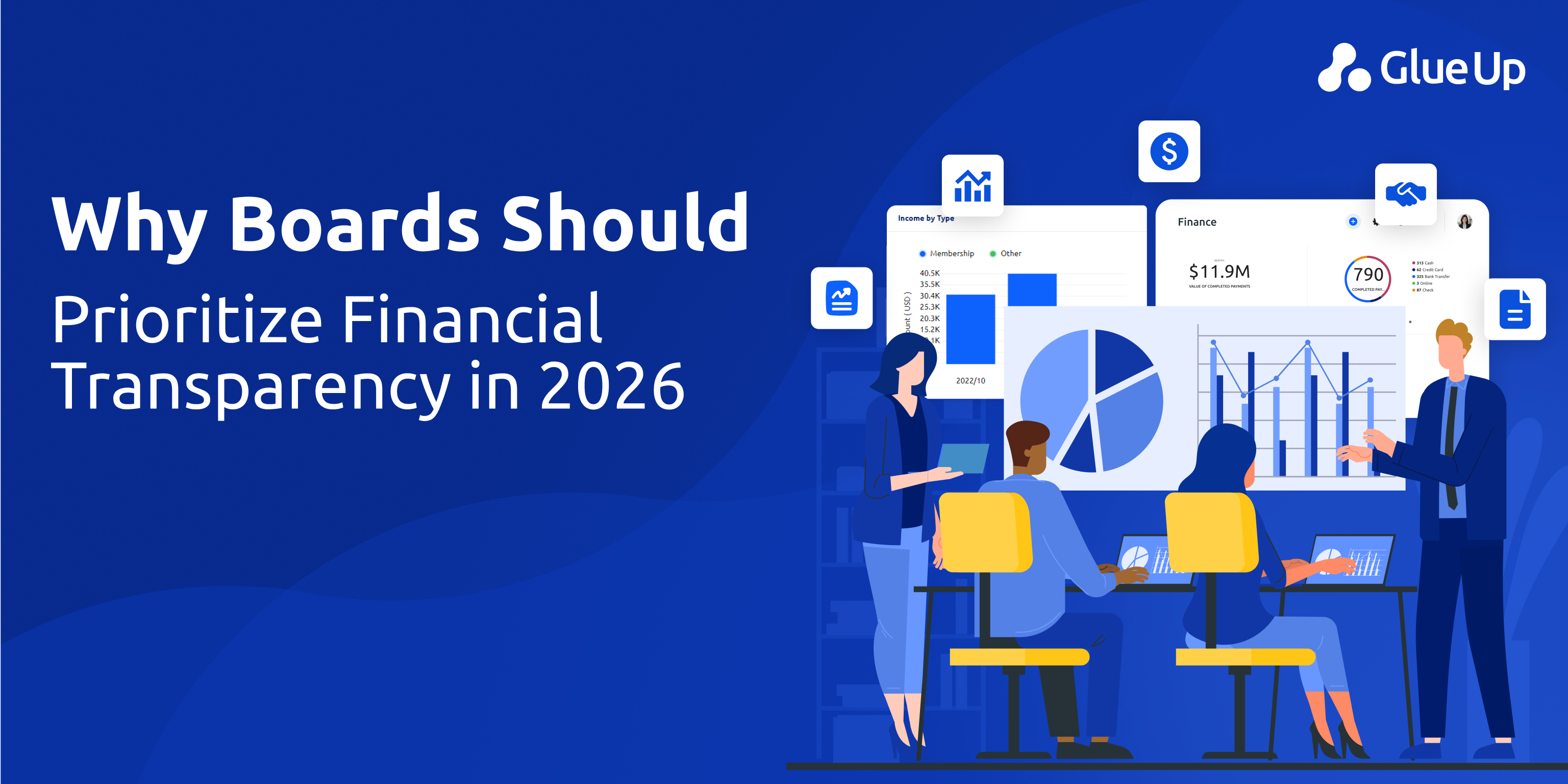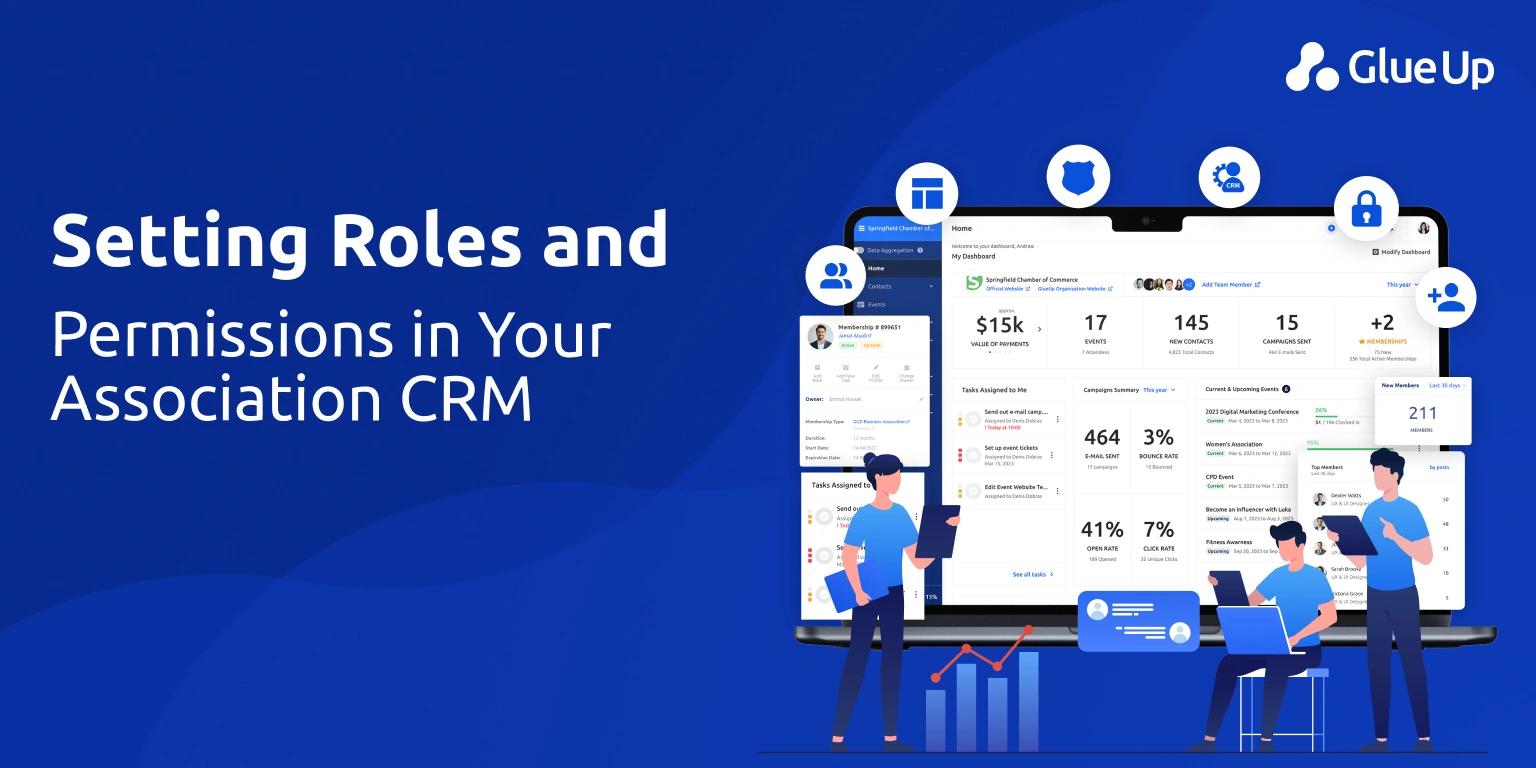
You can feel it in every board packet. Numbers that look fine on paper, narratives that sound fine in meetings, and then a quiet pause when someone asks whether last quarter’s story matches what went on the website, what went to a grantmaker, or what sponsors heard. That is the gap consistent financial reporting closes. Put simply, consistent financial reporting is not a once-a-year activity.
It is a weekly habit that keeps your numbers and your narrative aligned, protects trust, and gives your board a repeatable way to make smart decisions fast. For associations, chambers, and other member-based organizations, the upside is practical and immediate. Fewer clarification emails. Faster audits. Stronger renewal math. Better sponsor conversations. The work is not glamorous, but the results are obvious.
Key Takeaways
Make it a cadence. Use the same template, order, and definitions every quarter, this is consistent financial reporting in practice.
Own the glossary. Publish a one-page data dictionary so labels never drift and comparisons stay clean.
Show sources and uses. A four-quarter waterfall tells a complete story faster than rows of numbers.
Anchor the board page. One page, every time: cash runway, variance to budget, forecast to year end, restricted vs. unrestricted, exception log, and a plain-English note.
Set control gates. Clear owners, segregation of duties, materiality thresholds, version control, and a five-day exception-clearance target.
Kill contradictions. Align what appears on your website, in grants, sponsor decks, and board packets, your board owns consistency.
Prove it publicly. Post audited statements, the quarterly one-pager, your data dictionary, and dates on a transparency page.
Expect financial upside. Consistent financial reporting reduces audit friction, speeds sponsor renewals, and shortens grant reviews.
Run a 90-day rollout. Define and deconflict, design and document, run in parallel, then publish and remind.
Let systems carry the load. Use Glue Up for dues, events, CRM, and communications so consistent financial reporting becomes a routine.
Quick Reads
Event Management Platform for Modern Organizations • Glue Up
How to Measure the Success of an Event Partnership • Glue Up
Smarter Post Event Analytics for Better Org Growth • Glue Up
The 2026 Context: Rules Wobble, Expectations Do Not
Regulatory headlines may change, but expectations do not. Members, sponsors, donors, and bank partners still want clarity. They want to see the same story told the same way across time. That is what consistent financial reporting delivers. It frames your revenue, expenses, and cash in a structure the board can read in minutes and discuss in plain language.
Think about who reads your numbers. A treasurer who cares about cash on hand. A chair who cares about program viability. A sponsor who just wants to know whether promised deliverables happened. A grant reviewer who needs a clean, comparable view from quarter to quarter. Consistent financial reporting gives all of them a common map. When your format, definitions, periods, and owners do not change, trust compounds. It becomes easier to see what moved because of timing, what moved because of performance, and what is a real signal you should act on this month, not next year.
Consistent Financial Reporting as a Trust Engine
Trust is not a slogan. Trust is a habit your numbers teach over time. Consistent financial reporting does that by keeping your framing stable, your definitions uniform, and your cadence predictable. Members learn where to look. Donors stop asking for extra copies. Sponsors feel confident sharing your summary with their managers. Your own staff gets out of the back and forth that leaks time and energy.
Three mechanics make the trust engine work.
Same definitions, same order, every time. If “member revenue” includes dues but not event tickets in Q1, it should include dues but not event tickets in Q4. If you report “program costs” net of restricted grants this quarter, you report them net in the next quarter. When the order never changes, readers do not waste energy figuring out where to look.
The sources and uses view. Boards do not want a sea of rows. They want to see where money came from and where it went. A simple waterfall for sources and uses across the last four quarters tells a complete story. Consistent financial reporting anchors that story in the same visual, quarter after quarter.
Plain English notes. One short paragraph, written the same way each time, that explains variance to budget, drivers of change, and what to expect next quarter. No jargon. No hedging. Just a clear explanation that travels well into minutes, member updates, and sponsor decks.
What Boards Should See Every Quarter
If you want your board to move fast and stay aligned, give them the same one page every time. Consistent financial reporting shines when the layout is repeatable and tight.
Top line panel. Unrestricted cash on hand in weeks, variance to budget year to date, and forecast to year end. Three numbers, always in the same position, so a reader can scan in seconds.
Sources and uses waterfall. Four quarters side by side. Dues, events, sponsorships, grants, and other revenue on the left. Program costs, administrative costs, and capital or one time investments on the right. No surprises, no format changes.
Restricted versus unrestricted. A simple stacked bar that shows how much of your cash is actually flexible. Boards make better decisions when they understand that difference.
Exception log. Items opened, items cleared, and average days to close. This is where consistent financial reporting earns credibility. When issues are visible and cleared quickly, confidence rises.
Plain English note. Five sentences. What moved, why it moved, what risk it signals, what you are doing, and what you need from the board.
The COSO Checklist Made Usable
Controls sound technical, but they are just guardrails that keep your story intact. You can operationalize them without making life hard. Consistent financial reporting rests on five practical gates any organization can run.
Clear ownership. Every metric and every panel have a named owner. No shared responsibility for the same number. Shared responsibility leads to fuzzy outcomes. Owners sign off before the report ships.
Segregation of duties. The person who prepares does not approve, and the person who approves does not publish. This is not bureaucracy. It is basic discipline that stops accidental drift.
Materiality thresholds. Decide what counts as a real variance. Maybe two percent for dues, five percent for events, and one day for exception clearance. Publish those thresholds so readers know what matters.
Version control. Lock your template. No ad hoc columns. No creative formatting. Consistent financial reporting only works when the layout is stable, and the source of record is easy to find.
Exception clearance service level. Put a clock on yourself. If an exception opens, you close it in five business days unless you explain why. Speed is a signal of control quality.
Why Consistent Financial Reporting Improves Capital, Sponsors, And Grants
Money moves faster when numbers are easy to trust. Banks reduce questions. Sponsors move to renewal discussions without extra calls. Grants get past the first screen. Consistent financial reporting shortens every one of those paths.
Banks. Lenders care about predictability. When they see the same document with the same metrics in the same order, they do not ask for a custom packet. They see discipline. Your cost of capital depends on that perception.
Sponsors. Sponsors love proof they can forward. If your quarterly summary shows sponsor recognition delivered as promised, along with event attendance and lead lists, renewal conversations become simple. A sponsor does not need a long argument. They need an easy to share page.
Grants. Reviewers compare you against a stack. If your numbers look different in every submission, you create work for them. Consistent financial reporting gives them a familiar layout and the comparability they expect.
The Ninety-Day Rollout Plan for Consistent Financial Reporting
You do not need a massive project plan. You need a tight sprint that sets definitions, locks the template, and proves the habit.
Weeks 1 and 2: Define and Deconflict
Inventory every number you publish anywhere. Website, grant applications, annual report, sponsor decks, and board packets. Circle duplicates and contradictions.
Decide once what each category includes and what it excludes. Write your data dictionary in one page of plain language. Store it where people can find it.
Choose your headline metrics. Cash runway in weeks. Variance to budget year to date. Forecast to year end. Sources and uses. Restricted versus unrestricted. Exception log.
Weeks 3 to 6: Design and Document
Lock your quarterly template. Same order, same labels, same notes section. Anchor your brand but keep it simple so readers focus on content.
Assign owners. Every metric gets one name. Owners combine human judgment with system pulled numbers. Consistent financial reporting depends on people who know both the math and the story.
Write the close checklist. What gets reconciled, when it gets reconciled, who signs, and where evidence lives. Decide your service levels. Put dates on the calendar now.
Weeks 7 to 10: Run in Parallel
Generate your new one-page summary alongside your current board packet. Do not replace the old packet yet. Compare numbers, language, and timing. Fix gaps.
Hold an audit committee readout. Walk through the one page, the thresholds, and the exception log. Ask for pointed questions. Refine the plan based on what they challenge.
Weeks 11 to 13: Publish and Remind
Add a transparency module on your site. Post the latest audited statements, a member friendly one page summary, and the data dictionary. Put dates on everything.
Send a short member update. Tell people what changed and why. Invite feedback. When consistent financial reporting is public, behavior improves across the organization.
Board Questions That Keep Everyone Honest
Good boards do not try to be controllers. They ask simple questions on repeat until the habit sticks. Keep a short list on the last page of every packet.
Where might our website, reports, and grant applications be telling different stories about the same number
Which movement is timing, which is performance, and how do we know
Which assumptions aged out this quarter and should be replaced
What could go wrong next quarter if we do nothing
Did we clear all exceptions within our service level, and if not, why
Which metric needs a crisper definition before our next meeting
What is the minimal set of numbers we need to make a decision today
What would a sponsor or a grant reviewer ask if they read this page without context
Which program should expand based on this quarter’s evidence
Which program should pause based on this quarter’s evidence
These questions are not ceremony. They are the way consistent financial reporting becomes culture, not just a packet.
Publish Your Transparency Page
Transparency does not need to be heavy. A clear micro page will do more than a long glossy report that no one reads. The structure is simple.
Latest audited statements. Put the formal documents at the bottom of the page so they remain available without stealing attention from the summary.
One page summary. The same one you give the board, posted for members and sponsors. Make sure the date is visible.
Data dictionary. A single page that explains definitions in human language. If a member can read it and understand it, you wrote it correctly.
Badges and profiles. If your organization participates in rating platforms, link to your profiles and show seals. People want portable proof.
Contact. A simple address for questions. You welcome scrutiny because you planned for it. That is the spirit of consistent financial reporting.
Where Glue Up Fits into Consistent Financial Reporting
You do not need to reinvent your stack to make this work. You need your system to serve the habit. Glue Up maps naturally to the practice across finance, membership, events, and communications.
Finance and invoicing. Centralize dues invoices, installment plans, and payment status. When dues flow through one place, your revenue snapshots are cleaner. That supports consistent financial reporting without manual stitching.
Membership and CRM. Keep one record for each contact with dues status, payments, sponsorships, and engagement. When you roll up to the board page, you trust the categories because the source is unified.
Events. Registration, attendance, and fulfillment live in one module. Your sources and uses waterfall can include event revenue and event costs without guesswork. Your sponsor proof points are already there.
AI copilot writing assistant. Draft the plain English note using approved metrics, your data dictionary, and last quarter’s format. Editors review and sign off. The habit remains human, the drafting becomes faster.
Community and email marketing. Publish and pin your transparency page. Send the quarterly one page summary. Invite questions. Keep the message structure stable so your audience recognizes it on sight.
Manager app. Finance leaders can check exceptions, confirm reconciliations, and approve summaries from a phone. That speed helps you hold the service levels that consistent financial reporting demands.
The goal is not to add more tools. The goal is to make your existing system hold the shape of the habit. Glue Up does that for member-based organizations without asking your team to jump between point solutions.
Practical Tips That Save Time and Improve Accuracy
Small choices make the habit easier to keep.
Use short names. Members and board members read faster when labels are short and familiar. Dues, events, sponsorships, grants. Avoid clever labels that need a glossary to decode.
Lock dates in advance. Put the close date, the reconciliation date, and the publish date on the calendar for the next four quarters. When the dates are fixed, people plan around them.
Write once, reuse everywhere. The plain English note should be the same text that goes into the member email, the sponsor follows up, and the executive summary. Consistent financial reporting is also consistent communication.
Show a small history. Four quarters side by side is enough context for most decisions. If you need a longer view, include a link, not a new panel.
Protect your template. Assign a single owner for the layout. Changes go through a light review with the audit committee chair and the treasurer. You are protecting comparability.
Teach the glossary. Start every fiscal year with a fifteen-minute glossary review for staff who touch numbers. When the vocabulary is aligned, the numbers stop drifting.
How To Talk About Risk Without Scaring People
Numbers can feel cold. The way you talk about risk matters. Consistent financial reporting does not hide risk. It frames risk in a way that invites action.
Be specific. Say what might happen, when it might happen, and what would trigger action. Vague language breeds doubt.
Connect risk to a lever. If event revenue falls short, say how many registrations the shortfall represents and what outreach lever you will pull this week.
Report on mitigation. If you named a risk last quarter, say what happened. Risks that disappear without explanation erode confidence.
Give the board a role. Ask for a decision or an input. Boards are at their best when they know how to help.
This approach makes the board your partner. It also teaches readers that your quarterly note is not a show. It is a working document that guides real choices.
Make The Commitment Public
When you publish your cadence, you create accountability. Post your commitment in one paragraph on the transparency page.
We publish a one-page financial summary every quarter, in the same format, with the same definitions, and with the same thresholds for what counts as a real change. We post our latest audited statements, our data dictionary, and the dates of our next updates. Questions are welcome.
That is the spirit of consistent financial reporting. Set the promise. Keep the promise. Show the promise kept.
A Short Case Pattern You Can Reuse
You do not need ten case studies. You need one pattern your board recognizes.
Situation. Renewal rates dipped for two quarters. Cash runway was stable, but event margins were noisy. Sponsors asked for more proof.
Action. The organization adopted consistent financial reporting. It set definitions, ran a parallel close, published a data dictionary, and launched a transparency page. It used Glue Up finance for invoices and payment status, events for registration and fulfillment, and the AI copilot for the plain English note.
Result. Board packets shrank to one page with a standard appendix. Exceptions cleared in three days on average. Sponsors renewed at a higher rate after receiving a forwardable proof of delivery. Members opened the quarterly summary at a higher rate. Staff reported fewer internal clarification messages.
Repeat a pattern like this with real numbers when you have them. Until then, show the shape. Boards learn from structure.
From Reports to Routines
The hard part is not the math. The hard part is the habit. Consistent financial reporting turns the habit into culture. The board sees the same page. The page lands on the same date. The language reads the same way. The glossary does not drift. Exceptions do not linger. Members, donors, sponsors, and bank partners feel the difference even if they cannot name it. They feel confidence.
If you run a member-based organization, you do not have time to explain your numbers ten different ways. You have time to explain them once, clearly, and then live that clarity every quarter. That is what consistent financial reporting gives you. A frame for honest stories. A cadence that keeps everyone synchronized. A discipline that pays off in renewals, sponsor velocity, cleaner audits, and fewer late-night edits before a board call.
Make the commitment. Lock the template. Name the owners. Post the dictionary. Publish the page. Invite questions. Keep the promise. And let Glue Up carry the work that should live inside your system, not in your email threads.
Trust will follow. And once you feel how it changes the way people read your numbers, you will never run any other way.



